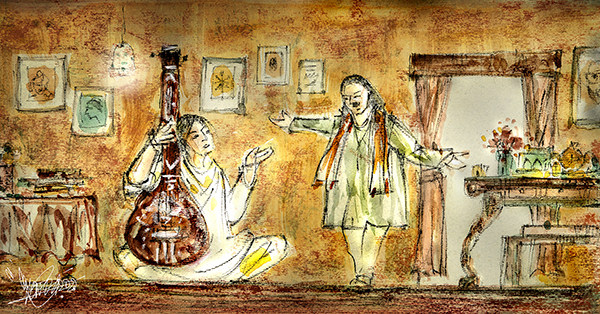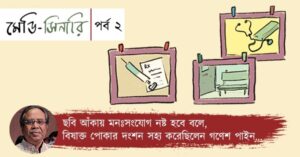Even as patronage to Hindustani classical music is believed to be on the decline, one comes across innumerable individuals and organisations professing to work for the promotion and preservation of music. In the past, not only have patrons offered varied forms of support to artistes, but the beneficiaries too have offered varied responses to the support they received. Among the many anecdotes and stories that music students are told are those of powerful and generous patrons from the yesteryears who rewarded the artistes they supported or employed in their service, with priceless jewels, whole villages and jagirs, and at times, grandiose titles celebrating their artistic skills and virtuosity. In current times, one hears of a wealthy patron having gifted his favourite cricketer and vocalist real estate goodies, but if truth be told, it becomes difficult to separate fact from fiction. Artistes in return have sometimes offered entire raags and bandishes in praise of their benefactors. But at times, as with all human relationships, things go horribly wrong in patron-artiste relationships leading to hostility and estrangement between the concerned parties.
One often wonders if there is more than a dollop of condescension in the process of offering patronage. Does a donor/sponsor-dependent relationship end up in making the beneficiary a supplicant, who should be ready to receive charity or alms on bended knees? Or, could the relationship evolve into one where an enlightened patron provides robust support to an artiste, easing in some measure the many complex struggles that a gifted artiste often encounters? Possibly, an answer can be found only when one accepts the fact that there are all kinds of patrons, each with their own idea of how to support an artiste or art form. And patrons too can get creative or at least try to, at their own peril.
I was once approached by a friend of a friend of a prospective patron, who tried his hand at getting unusually creative in offering his support to Hindustani music. The patron in question wanted to start a gharana named either after his place of birth or his family name, and only then would he put his money where his mouth was. Taken aback by the scheme, I tried explaining that a gharana could be established only when several generations of artistes continued to follow a single identifiable style, and therefore it seemed unlikely that a new gharana could be established in our lifetime. Not to be deterred, the gentleman urged me to think out of the box and make a start by at least finding a new name for the proposed gharana. If in the course of time, no one chose to follow the same gharana, neither of us would be around anyway to face the flak!
One often wonders if there is more than a dollop of condescension in the process of offering patronage. Does a donor/sponsor-dependent relationship end up in making the beneficiary a supplicant, who should be ready to receive charity or alms on bended knees? Or, could the relationship evolve into one where an enlightened patron provides robust support to an artiste, easing in some measure the many complex struggles that a gifted artiste often encounters?
And then there was the genteel lady who approached me for ideas regarding welfare schemes that would benefit artistes. I tried to offer several options as diligently as I could, and was duly thanked and informed that the bombastically named organisation she represented and headed would meet to discuss and select their preferred scheme soon. Alas, a year went by without any word from said lady or organisation, and I took this to mean that possibly none of the schemes was found suitable. But a year later, I received another call apologising for the delay and with the happy tidings that one of the options to help ageing artistes had been accepted. A request to identify suitable beneficiaries followed shortly and once again, I diligently provided information. Many lengthy calls and many detailed emails spread over many moons passed by before a single artiste was identified and accepted by the Board for support. A brilliant performer, with a mind-boggling repertoire of rare raags and compositions, the selected artiste was in fine voice and health at the time. But board meetings were difficult to organise, I was told, with members being wrapped up in their corporate affairs and many social commitments, to spare time for the arts. And so more moons passed by during which the selected artiste aged and weakened, fell ill and finally passed away. The promised support did not reach him in time.
The public sharing of these two real-life experiences is by no means meant to denigrate the past or present contributions of people who have supported Hindustani music whole-heartedly and with great vision and dignity. It is only meant to point out that there can be many kinds of patrons, and similarly, many kinds of artistes.
Illustration by Suvamoy Mitra






